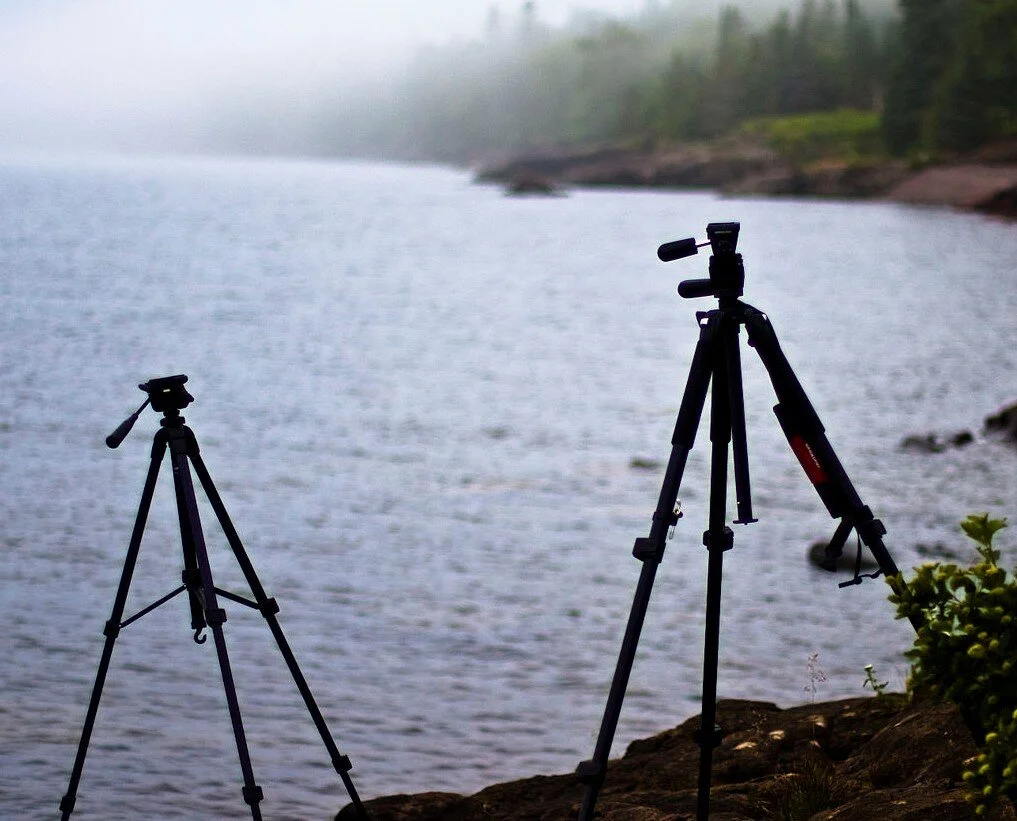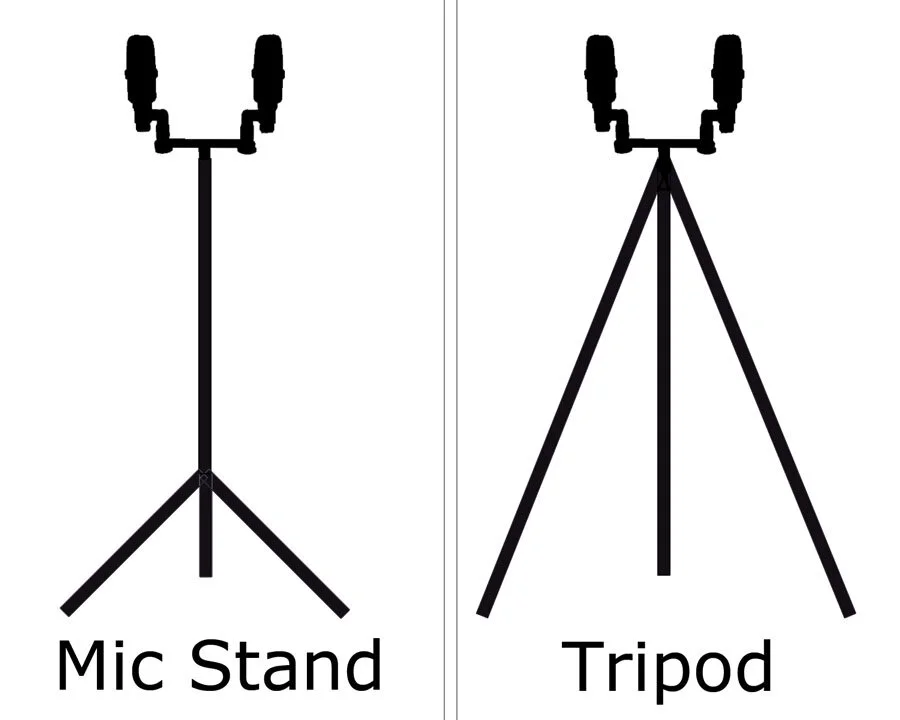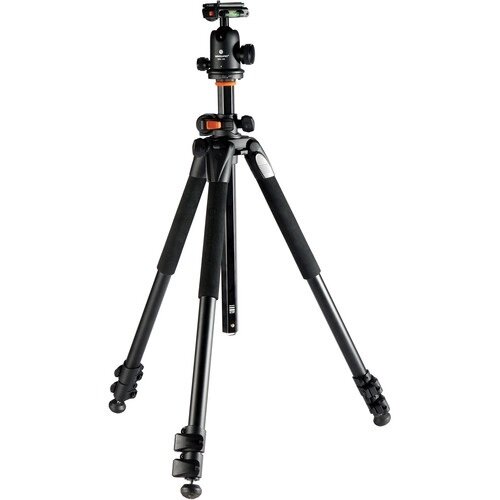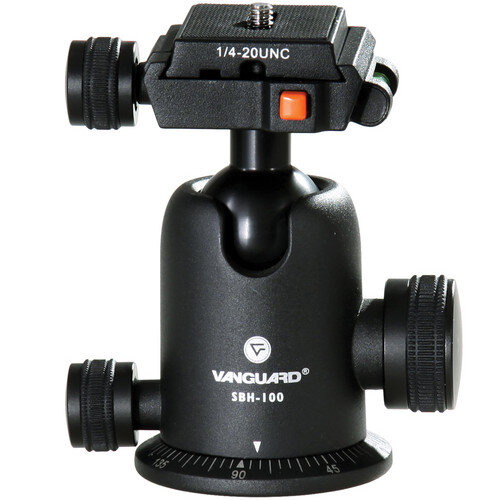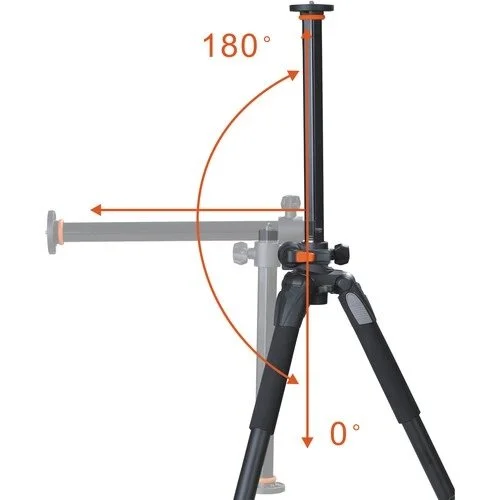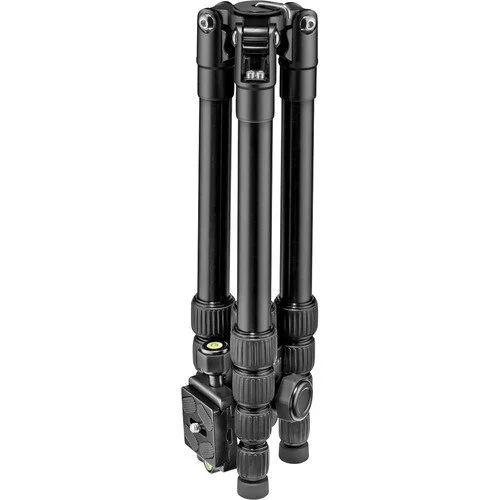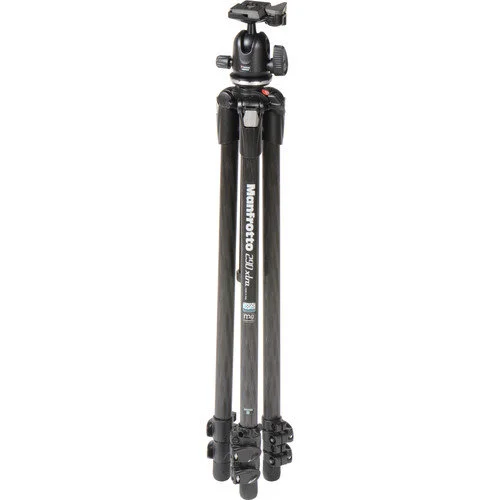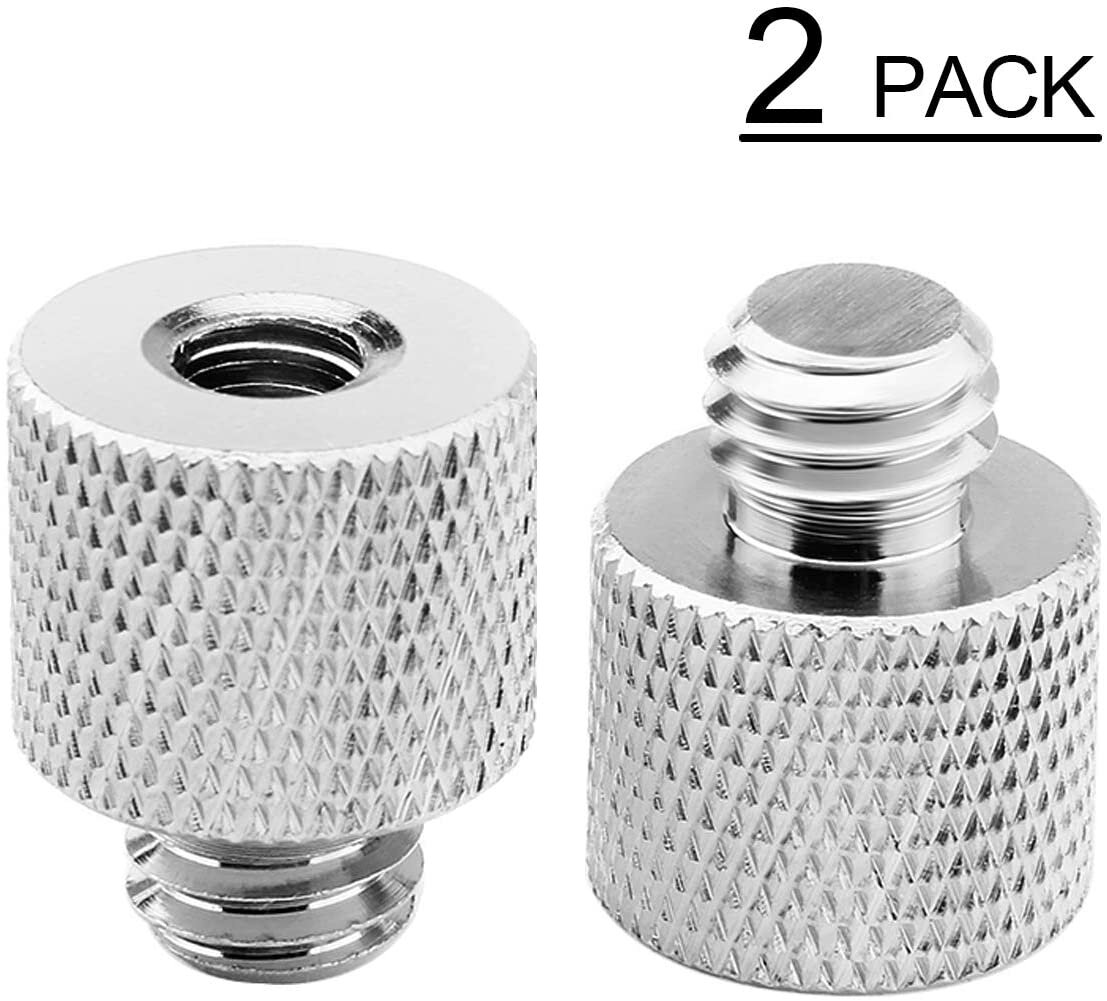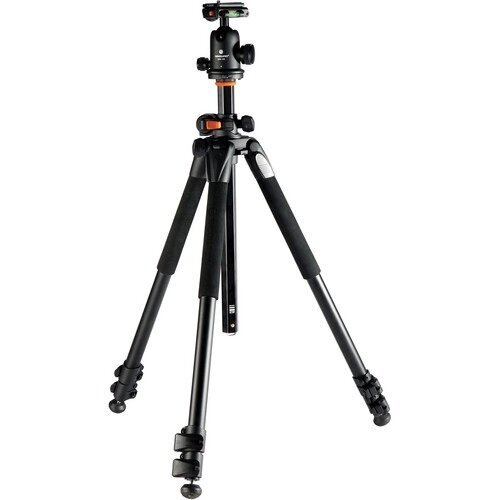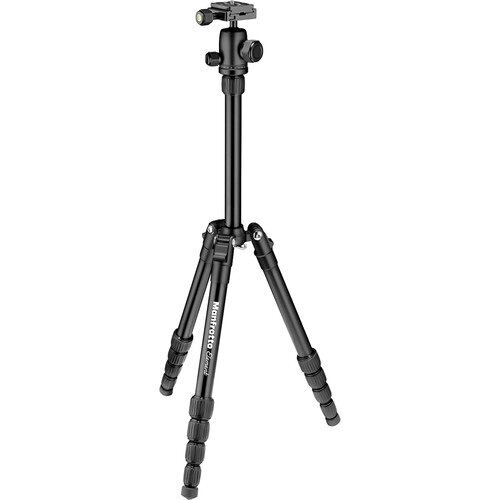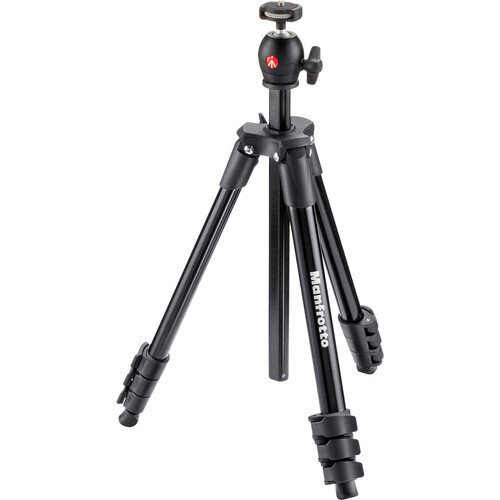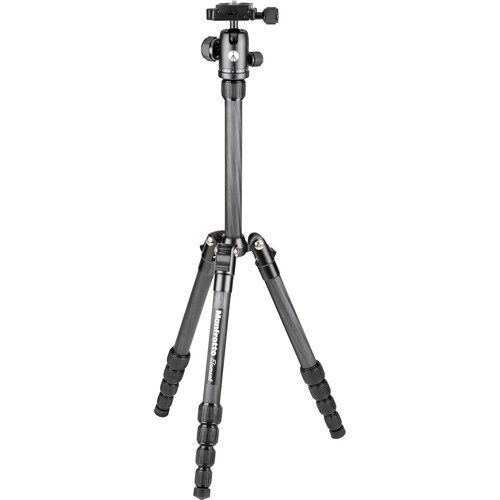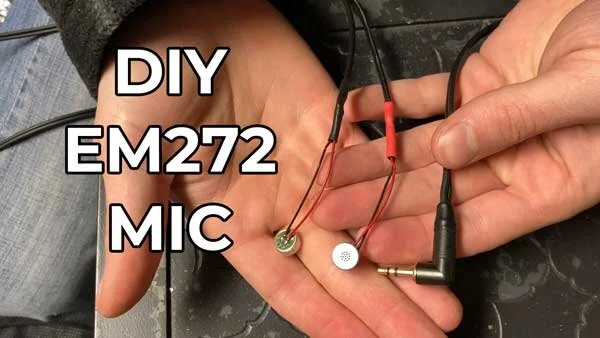Best Tripod For Field Recording (Material, Weight, Folded Size)
A tripod is an essential tool for the field recordist. Find out which is best for you in this article.
Whether recording atmospheres, spot sound effects or foley sounds, a tripod is a key piece of gear for any field recordist. This is due to the nature of field recording.
Because field recordings are not made in recording studios, field recordists have to be very adaptable; tripods give us that adaptability.
Tripods can cover nearly any height, angle or terrain with stability you can trust. This is extremely important, especially if you’ve invested as much in recording gear as I have.
Besides preventing gear from crashing to the ground, tripods also allow for higher quality recordings by eliminating handling noise (and other bodily sounds) from entering your recordings.
This is a longer article so feel free to use the below links to jump directly to the content that interests you most.
Links on this page are affiliated with Sovrn and Amazon Associates networks.
In This Article:
Benefits of Using a Tripod
Tripod vs Mic Stand
Important Tripod Features:
Material
Head Type
Height
Weight
Quick Release
Folded Length
Leg Lock
Recommendations:
Best Aluminum Tripods
Best Carbon Fiber Tripods
Thread Adapters
Benefits of Using a Tripod
Peace of mind. Worrying about the integrity of your setup is stressful and doesn’t make for an enjoyable outing. When using a quality tripod, you can relax knowing that your equipment is in good hands and focus on your work. Use your mind for what’s really important: location, composition, mic placement, channel balance, gain, etc.
Stability. Tripod design focuses on stability first and features second. This stability prevents vibrations caused by wind and low-frequency sounds from being transferred to your recorder. This helps you to record clearer audio.
Any terrain. When out in the field, we never know exactly where we are going to setup our gear. The area may be uneven, steep or even underwater! Having a tripod keeps all these options open thanks to its individually adjustable legs.
Any height. Having a tripod will allow you to record anywhere from a few inches to 5+ feet above the ground. With this range of height, you can capture detailed, up-close audio from almost any source.
No handling noise. Handheld recorders are highly sensitive to handling noise. Using a tripod will completely eliminate this annoyance. As an added bonus, you can monitor your recording from far away. This means that other bodily noises like stomach gurgles, swallowing and breathing won’t be recorded either. Breathe a silent sigh of relief!
Tripod vs. Mic Stand
Now I know what some of you are thinking, especially if you record with external microphones, “why don’t I just use a mic stand for my microphones?” I see your point.
Mic stands are purpose-built to hold recording equipment and they are less expensive than most tripods. The big difference is that mic stands are designed for indoor, controlled conditions. Take a mic stand outdoors and you will immediately realize how inadequate it is.
Mic stand legs are not adjustable. They lock into place with all legs equidistant from the central support. This design is only stable on level ground, which is difficult to find even in urban environments.
Mic stands can easily become top heavy due to their leg design. Tripods are very stable because their legs span the distance from ground to gear. Which would you trust?
In addition, the legs are very close to the ground with a long central post leading to your equipment. This spindly design is not as stable as a tripod. Considering you’re probably not on flat ground already, add in some wind and your equipment is likely to topple over.
Long story short, the money you save on a mic stand is not worth the frustrations they will cause in the field.
Important Tripod Features
Material
There are two main materials to consider when shopping for a tripod. Aluminum or carbon fiber. Choosing a material should be the first decision you make when shopping for a tripod. To help you with that decision, let’s look at the pros and cons for each option.
Aluminum
PRO
Durable
Cheaper
More stable
CON
Heavy
Can transmit vibrations
Can rust
Carbon Fiber
PRO
Lightweight
Less vibration transmission
Won’t rust
CON
Expensive
Less stable
Less durable
Both are viable options for field recording, but the best option for you will depend on your preference and style.
Are you someone who travels a lot, takes good care of your equipment and have a little extra in your budget? Then carbon fiber should work great for you.
Conversely, are you someone who prioritizes reliability and stability and need a tripod that can withstand the bumps and drops? If so, aluminum is probably the way to go.
I’ve researched both materials and listed recommendations for each options. Jump to aluminum tripods here, or jump to carbon fiber tripods here.
Head Type
The tripod’s head sits between your gear and the tripod itself. It controls the angle and position of your recorder and is fully adjustable. The way these adjustments are made depends on the type of head in use. There are 4 different kinds but most are designed specifically for photography and videography.
Example of a tripod ball head.
The best head for field recording is the ball head. This is the most modern and popular tripod head because of its ease of use, stability and compact size.
With only one control, the position can be changed 360° and locked into place. Not only is this easy, it is highly efficient. You will spend less time setting up your recording with a ball head.
Height
Not only is the maximum height an important factor when selecting a tripod, but the minimum height is equally important. To give yourself the most flexibility in the field, you want a tripod that can go from head height to a few inches above ground.
Recording an atmosphere at head height will give realism to your sound. We are used to hearing environments at this height and will notice a difference if the recording is too high or too low. The next time you’re out, listen to an atmosphere from a standing position, and then from a squat. You’ll hear a huge difference in sound.
Alternatively, it can be interesting to record from a low perspective. This offers us a unique experience of sound. Some of my favorite sounds to record from a low height are flowing water, grass in the wind and animals. Getting down to these sounds captures subtle details that we miss when walking by.
Weight
Weight can be critically important if you have to travel or hike to reach your sounds. In these cases, a lighter tripod will make for a more enjoyable experience. As previously mentioned, the tripod’s material will be the main factor here, but there are heavy and light options for each material.
In other scenarios, heavy tripods are more suitable. When recording in high winds, on rocky terrain, or when leaving your gear unattended, a heavier tripod will give you more peace of mind thanks to its superior stability. I frequently record in the mountains where I face these conditions and I opt for a heavier, aluminum tripod.
Quick Release
Highlighted diagram of a quick release plate.
A quick release feature is a must for any tripod. By flipping a switch, you can instantly remove whatever is attached to the tripod. This saves a ton of time by allowing you to quickly change between recorders, microphones or other attachments and greatly speeds up setup and take-down time.
This works by screwing a plate into the tripod socket on your equipment. The plate then slides onto the tripod head and is secured into place by a friction switch. Releasing this switch frees up the plate and it can be removed easily.
To save even more time, purchase a quick release plate for each of your most commonly used tools. This will make exchanging them even faster.
Folded Length
Having a tripod that packs down into a small-sized package is really convenient, and if you’re a traveler, it could be a necessity. In order to meet the shrinking luggage constraints, having a compact tripod is a must.
The most compact tripods can fold down to just 12” / 30.5cm in length. However, tripods this compact are shorter than others with a maximum height of around 55” / 139cm.
Leg Lock
The legs of a tripod are made of several sections. The sections nest within each other to save space. To set a tripod up, the sections must be released and locked into the desired position. There are two mechanisms for achieving this: flip locks and twist locks.
Flip locks and twist locks are two methods for securing the different sections of tripod legs.
Flip Locks
Flip locks are popular due to their ease of use and rapid setup time. Simply “flip” the locking clasp open to extend the leg, and flip the clasp closed to secure it in place. The amount of tension can be increased should the lock ever become loose by tightening the clasp’s screw. This quick fix can be done in the field and adds longevity to the mechanism.
Twist Locks
Twist locks can intimidate people who believe they are difficult to use. However, after a little practice, twist locks can actually be easier and faster to use than some flip locks. For maximum efficiency, remember that only a quarter-turn is needed to release and lock each leg section.
Recommendations
When I do research for product recommendations, I put myself in the position of the consumer. I focus on specific features, reliability and durability because, at the end of the day, I want the best-value for my money.
I conduct extensive research and use my own experience and buyer awareness to determine what the best options are for different lifestyles and budgets. This is my approach and this is what I’ve found.
Aluminum Tripods:
Best Features:
Vanguard Alta Pro 263AB
The Vanguard Alta Pro is an absolute beast. The epitome of an aluminum tripod, the Alta Pro checks all the important boxes for field recording.
Made out of aluminum, this tripod is built to last and take a beating.
With a weight of 5.4 pounds / 2.4kg, it offers stability you can trust in any situation. For extra stability, the rubber feet have retractable, metal spikes for soft surfaces.
The legs can be individually angled at 20°, 50° or 80°, allowing stable deployment over any terrain.
As a bonus feature, the center column can be tilted to act as a boom, or rotated upside down for extremely low-angled recordings.
Specifications:
Head: Ball
Quick Release: Yes
Load Capacity: 15.4lb / 7kg
Max Height: 68.1” / 173cm
Min Height: 5.6” /14cm
Folded Length: 28.1” / 71.4cm
Weight: 5.4lb / 2.4kg
Leg Lock: Flip lock
What I like:
Durable, reliable construction
Independent leg positions (3)
Head height to ground level coverage
Extremely stable
Foam leg covers on each leg
What I don’t:
Heavy for some users
Not very compact
Bottom line: If you’re looking for a robust tripod that you can trust to hold priceless equipment in any conditions, the Alta Pro is your best value option.
Best of Both Worlds:
Manfrotto Element Traveler Aluminum
The Manfrotto Element Traveler has both aluminum and carbon fiber features, making it a great “hybrid” option.
Typical for aluminum construction, the Traveler will be durable for use in the field.
Atypical for aluminum tripods, the Traveler is lightweight and compacts down to a very small size. This makes it a great, durable option for the traveler (good name Manfrotto).
However, this weight and compactness comes at a price. The Traveler doesn’t quite reach head height and lacks foam leg covers. Foam leg covers make carrying a tripod more comfortable and much warmer to handle in colder temperatures.
Specifications:
Head: Ball
Quick Release: Yes
Load Capacity: 8.8lb / 4kg
Max Height: 52.8” / 134cm
Min Height: 14.2” / 36cm
Folded Length: 12.6” / 32cm
Weight: 2.5lb / 1.2kg
Leg Lock: Twist Lock
What I Like:
Durable, construction
Independent leg positions (3)
Very Compact
Lightweight
What I Don’t:
No foam leg covers
Doesn’t reach head height
Not as stable in high winds/steep terrain
Bottom line: If you’re looking for a tripod to travel with that is lightweight, compact and durable, the Element Traveler is your best option.
Best Budget:
Manfrotto Compact Light
The Manfrotto Compact Light is a no-frills option for a low budget or the beginner.
Built from aluminum, the Compact Light is durable and holds up against bumps and scrapes.
It is fairly compact and very lightweight, making it good for travel and hiking.
The central column can be removed and installed upside down to get your microphones closer to the ground.
With no quick release plate, the Compact Light is most efficient with just 1 recorder.
Specifications:
Head: Ball
Quick Release: No
Load Capacity: 3.3 lb / 1.5 kg
Max Height: 51.6" / 131 cm
Min Height: 15.4" / 39.1 cm
Folded Length: 15.7" / 39.8 cm
Weight: 2.0 lb / 921.0 g
Leg Lock: Flip Lock
What I Like:
Durable construction
Lightweight
Affordable
What I Don’t
Only 1 leg position
No foam leg covers
No quick release plate
Bottom line: If you’re looking for a low-priced, durable tripod from a trusted brand, the Compact Light is your best option.
Carbon Fiber Tripods:
Best Features:
Manfrotto Xtra
The Manfrotto Xtra is a professional, full-scale, carbon fiber tripod built to last.
Reaching from head height to ground level (with center column inverted), it is capable of capturing any sound with closeup detail.
The legs are independently adjustable between 3 different positions. This makes stable positioning on the most uneven terrain fast and easy.
Durable design with magnesium leg locks and aluminum center column.
Heavier weight adds stability to the carbon fiber legs.
Specifications:
Head: Ball
Quick Release: Yes
Load Capacity: 11 lb / 5 kg
Max Height: 70.7" / 179.6 cm
Min Height: 12" / 30.5 cm
Folded Length: 24.5" / 62.2 cm
Weight: 4.2 lb / 1.5 kg
Leg Lock: Flip Lock
What I Like:
Built for durability
Independent leg positions (3)
Head height to ground level coverage
What I Don’t:
Heavy for a carbon fiber tripod
Not compact
Expensive
Best Value:
Manfrotto Element Traveler Carbon Fiber
The Manfrotto Element Traveler makes my list again, this time in carbon fiber.
Its lightweight and extreme compactness make this a great option for frequent travelers.
Carbon fiber construction means less vibrations transferred to your recorder (carbon fiber doesn’t resonate like aluminum).
With a maximum height just under head height and a minimum height of 13.8"/35 cm, the Traveler doesn’t offer extremes on either end of the spectrum, but should be suitable for most recording scenarios.
The central column has a hook to hang a gear bag from to give it extra stability by increasing weight.
Specifications:
Head: Ball
Quick Release: Yes
Load Capacity: 8.8 lb / 4 kg
Max Height: 56.3" / 143 cm
Min Height: 13.8" / 35 cm
Folded Length: 12.6" / 32 cm
Weight: 2.3 lb / 1.1 kg
Leg Lock: Twist Lock
What I Like:
Lightweight
Very Compact
Independent leg positions (3)
What I Don’t:
Susceptible to high winds
Doesn’t reach head height
Not as durable as aluminum
Bottom line: If you’re looking for a lightweight, compact carbon fiber tripod that doesn’t break the bank, this is the best bang for your buck.
Thread Adapters
This is really important. Because tripods are primarily engineered for cameras, they use 1/4” thread. On the other hand, standard microphone holders and accessories require larger, 3/8” or 5/8” thread.
If you are planning on mounting your portable recorder to the tripod, this is not a problem. Almost all portable recorders have a female 1/4” insert on the bottom and can be directly connected to your tripod or quick release plate.
However, if you are planning to use your tripod to hold external microphones, shock mounts or stereo bars, this will be a problem. These require either 3/8” or 5/8” threading.
Don’t worry. Making these accessories work with your tripod is easy, all you need is the right adapter.
If you require a 3/8” connector on your tripod, I recommend this adapter. I chose this one because it is made from nickle-plated brass. Cheaper options are made from aluminum but brass is the better material for threaded applications.
Aluminum is softer and more likely to pick up dirt than brass threads, leading to thread galling and stuck adapters.
If you want even more toughness, go with this 3/8” steel adapter but note, it does not have any knurling so you will need a screwdriver or coin to tighten and loosen it.
If you require a 5/8” connector, this is my recommended adapter. This adapter is made out of stainless steel. Steel is the best material for threaded applications because it is harder and more corrosion resistant than either brass or aluminum. Additionally, it is knurled at the bottom, making tightening and loosening easy. This adapter will last you a lifetime.
Summary
Best Aluminum Tripods for Field Recording:
Best Carbon Fiber Tripods for Field Recording:
I hope this article has helped you in your decision making process. If it has, let me know! I would love to hear from you.
If you already have a tripod that you love, reach out and let me know what you’re using and why you like it. You can send me a message through my contact page.
Support Acoustic Nature
If you enjoyed this post and would like to help support Acoustic Nature, please consider "buying me a coffee" or becoming a Patreon with the buttons below.
As a thank you for your support, Patreon supporters receive a copy of Field Recording For Beginners, exclusive access to the full Behind The Sounds video series, nature sound library downloads, and more.
If you are unable to support the site financially, please share this post with others, or leave a comment below letting me know you enjoyed this post! Both are free and help the website grow. Thank you ♫
Thanks for reading,
-Jared

